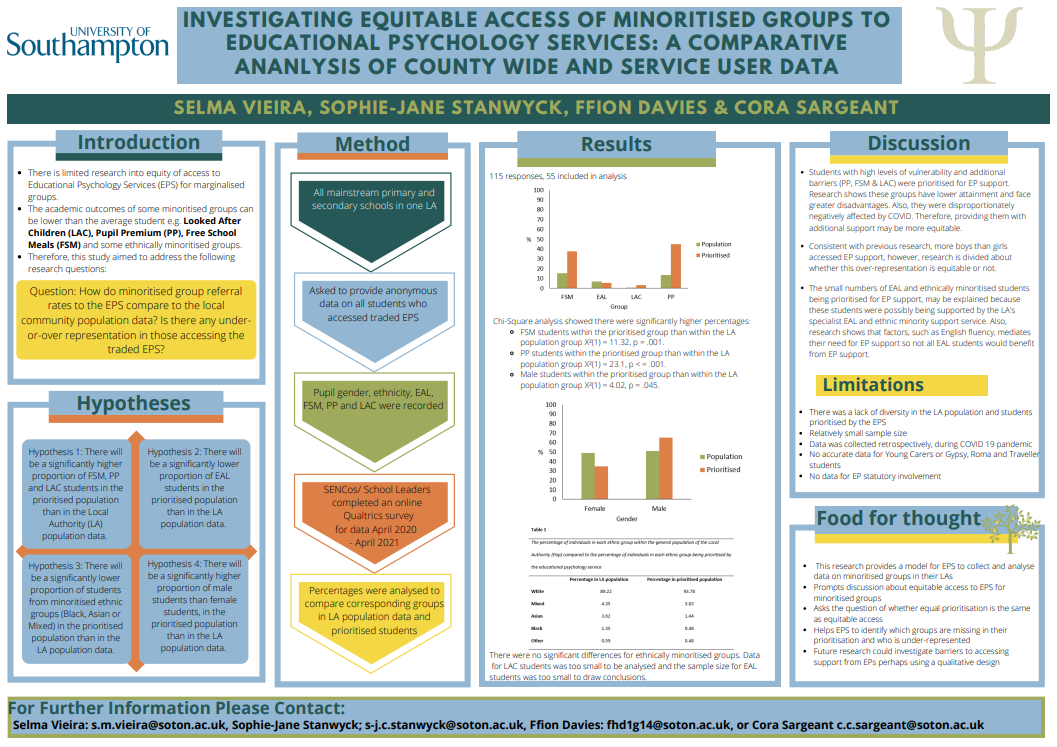Assignment type: Thesis
Author: Alexandra Gregory
Submitted: June 2018
Abstract
A systematic literature review was conducted to explore the educational outcomes for, and experiences of, siblings of children on the autism spectrum (autism siblings). Whilst there is a growing body of research on the psychological outcomes for autism siblings, few studies have considered how this might influence the school context. Findings were linked to the Siblings Embedded Systems Framework; school factors, psychological internal challenges and resources, peers and other formal and informal social systems, and personal interpretation of events. Overall, school outcomes and experiences showed large variation, suggesting that some autism siblings are at increased risk of difficulties in the school context, but that autism siblings do not automatically experience challenges in school. Nevertheless, the review highlighted a number of methodological limitations of the evidence-base in this area, including the small body of literature, particularly in the UK, studies of low methodological rigour, such as those employing small sample sizes, and reliance on solely parent-reported outcomes. This limits the conclusions that can be drawn.
The empirical study extended the current literature to explore two school-related outcomes; sense of school belonging and academic self-concept. Using online questionnaires, autism siblings and siblings of typically developing children without autism (typical siblings) aged 11 to 16 years in secondary schools across the UK took part.
Data on sibling wellbeing were also triangulated via self-, parent/carer- and teacher reports. Relative to typical siblings, autism siblings self-reported significantly lower school belonging and academic self-concept, in addition to significantly lower self, parent- and teacher-reported wellbeing outcomes. Regression models established that sibling-reported internalising and externalising behaviours significantly predicted both school-related outcomes. Sibling group was also a significant predictor in all models, demonstrating that even once demographic variables and sibling wellbeing were controlled, robust sibling group differences were still present. Despite these findings, there was a greater variation in autism siblings’ school outcomes compared to typical siblings. Therefore, this study highlights the importance of taking an individualised and person-centred approach to understanding the varying needs of, and providing support to, siblings of children on the autism spectrum.
Download thesis (PDF) via ePrints Soton


